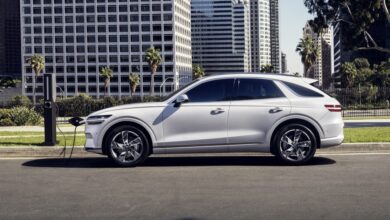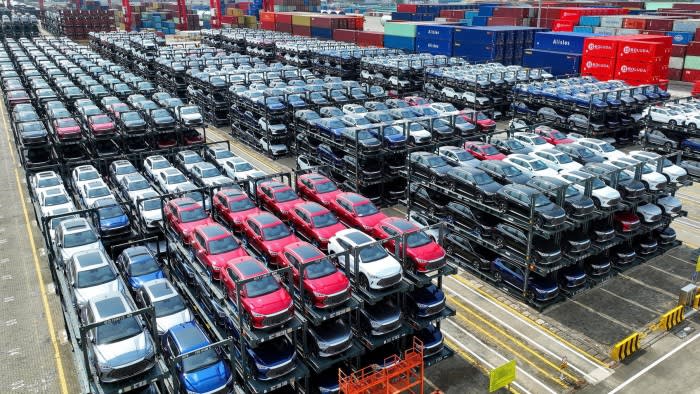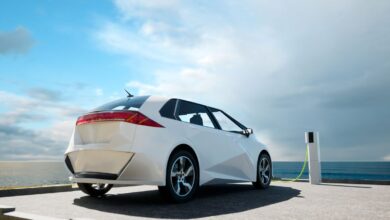Plugged in: Fast chargers for electric vehicles come to ANU campus

Last week, six new DC fast electric vehicle (EV) chargers located near the School of Art and Design were launched at a media event on the Acton campus. The chargers are part of the ACT Government’s first round of public funding to support Canberra’s electric vehicle charger network expansion.
At the event, ACT Minister for Water, Energy and Emissions Reduction Shane Rattenbury announced a second round of funding to support 39 new charging stations across Canberra in the coming year, including a second station on the Acton campus with four more DC fast chargers.
Deputy Vice-Chancellor (Research and Innovation) and former Entrepreneurial Fellow and inaugural Head of ANU Battery Storage and Grid Integration Program, Professor Lachlan Blackhall, told the press, “These EV chargers represent one of many ways the University is working to support the broader community in the ACT to reduce our collective carbon footprint. This is an important activity because electrifying and decarbonising our transportation system is one of the keyways that we can address the existential challenges of climate change.”
According to the Electric Vehicle Council, ACT is leading the uptake of zero-emission vehicles (21.8 per cent national uptake). Minister Rattenbury said, “In November [2023], one in four new cars registered in the ACT was an EV.” A positive step towards the ACT goal to be net zero emissions by 2045.
“Transport currently makes up over 60 per cent of ACT emissions, with private vehicle use accounting for most transport emissions. Installing more public chargers is just one of the ways we are supporting the electrification of our city’s transport system,” Minister Rattenbury said.
ANU is working with EV charger operator ENGIE on the location for this new bay of four DC fast chargers to come later this year, likely in the Fulton Muir Building carpark on the north side of campus. Greg Schumann, ENGIE ANZ Director of Green Mobility, said, “It’s important to place EV charging infrastructure in convenient locations where people want to go, be it a university, shopping centre, tourism destination or somewhere they visit as part of their daily routine.”
With this latest station coming into operation later this year, the ANU campus will have 11 EV chargers to service our community, including the first ANU charger located near the Ian Ross Building that has recently come back in service after a brief closure for building renovations.
“Installing these EV chargers supports our transition to a decarbonised campus and is one of many projects that sit within the ANU Below Zero Program, a collection of initiatives underpinning our commitment to carbon neutrality from 2025 on the path to below zero emissions,” says Professor Blackhall.
On the same day the chargers were opened, the School of Art and Design held an event celebrating the decommissioning of its gas-powered furnace, Roxanne. This long-lived asset to our glass-making community is being replaced by an electric furnace in 2025, a project supported in part by ANU Below Zero funding, taking us closer to our below zero emissions goals.
In addition to providing charging facilities for the community, our goal is to electrify the entire ANU vehicle fleet by 2030. We’ll approach this in several tranches, starting with cars and SUVs, then vans, non-fieldwork utilities and light trucks and finally field utilities and 4WDs. This phased approach is necessary to follow the market as zero carbon replacements for some vehicle types are not yet available.
EV charging stations on Acton campus
-
Six DC fast chargers in the School of Art and Design carpark near Canberra REP Theatre (Formerly Theatre 3). Payment can be made through the ChargeFox app with credit card facilities coming online in the coming months.
-
One charger with the capacity to charge two vehicles in the Geology Close carpark in front of the Ian Ross Building. Charging is free to the public and supported by the ANU School of Engineering.
Check PlugShare.com for more information on these locations.
ANU is working to reduce our environmental impact across all our emissions sources including energy, travel, waste and more. Looking for other ways to help support this mission? Join the One Small Step app, developed to speak directly to the ANU community with easy and fun ways to act more sustainably.



